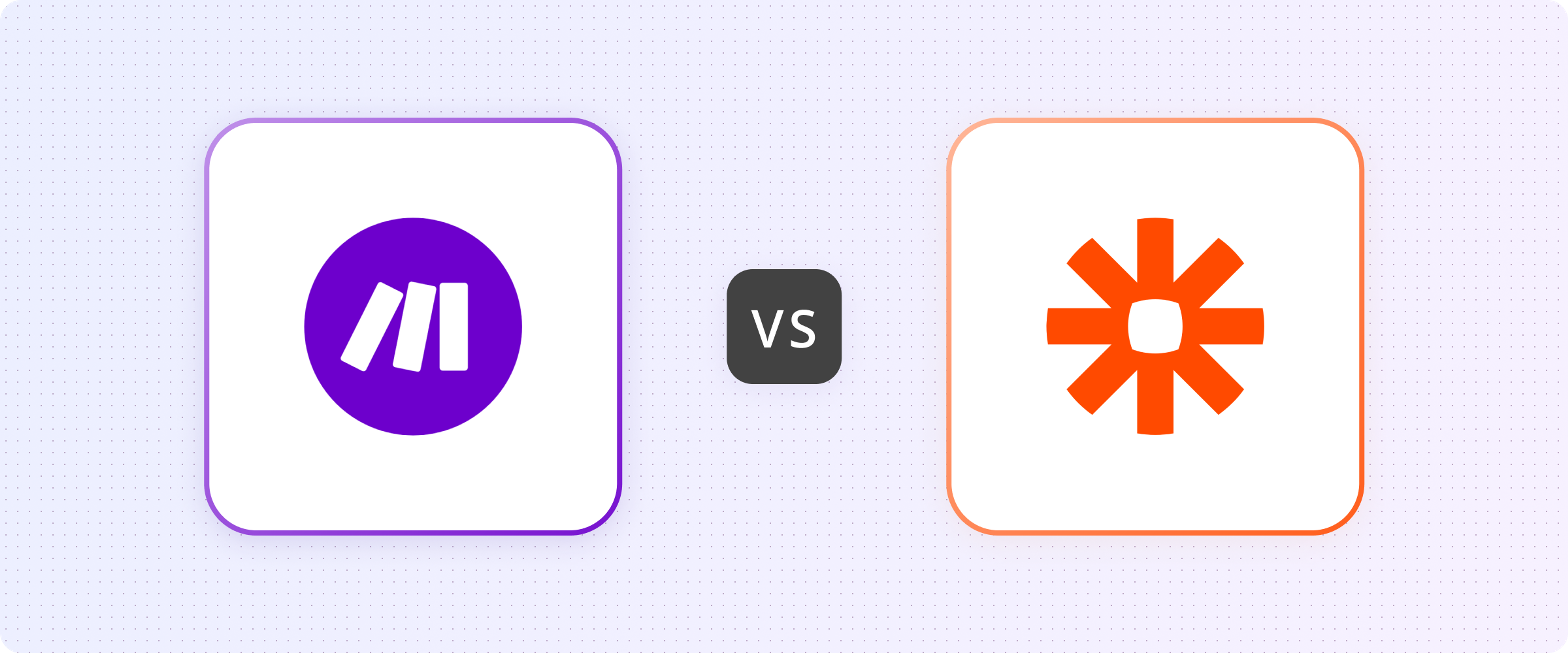
Make and Zapier are two workflow automation tools designed to integrate your favorite apps and automate repetitive tasks. But how do they stack up against each other? Here's what we discovered when we tested Make and Zapier:
- Both apps offer a similar product with different execution
- Make has more features, and often, better implementation
- Zapier is much easier to learn
- Zapier has a larger integration library, but Make offers deeper action and trigger support
- Make is more cost-effective for most use cases
Make vs Zapier: the rundown
If you're in search of a brief overview, here's the essence of how Make and Zapier compare (continue reading for an in-depth analysis):
- Make: Best for users requiring complex, multi-step workflows and those who prioritize cost-effectiveness and customization in their automation processes.
- Zapier: Best for individuals and teams seeking ease of use with a vast integration library, preferring a straightforward approach to automation without the need for in-depth technical knowledge.
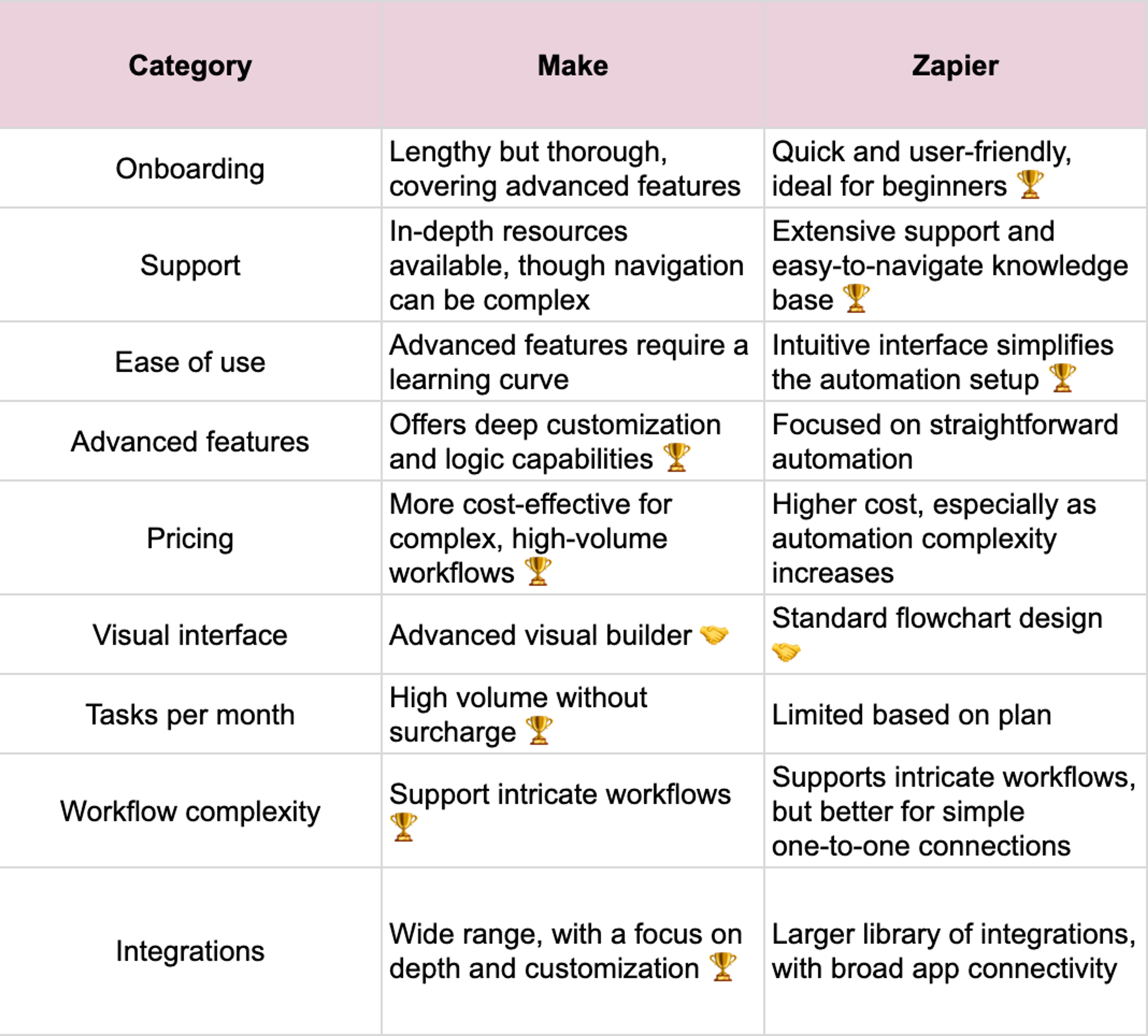
Both apps offer a similar product with different execution
Both apps deliver similar services but in distinct ways. Make and Zapier aim to automate tasks, enhancing workflow efficiency, yet they cater to different user preferences.
Make excels in handling complex, multi-step workflows, offering unmatched granularity and flexibility. It suits users with specific automation visions, providing deep customization through its visual builder. This tool enables users to craft detailed scenarios, ensuring tasks execute as planned.
Here's what the automation interface looks like in Make:
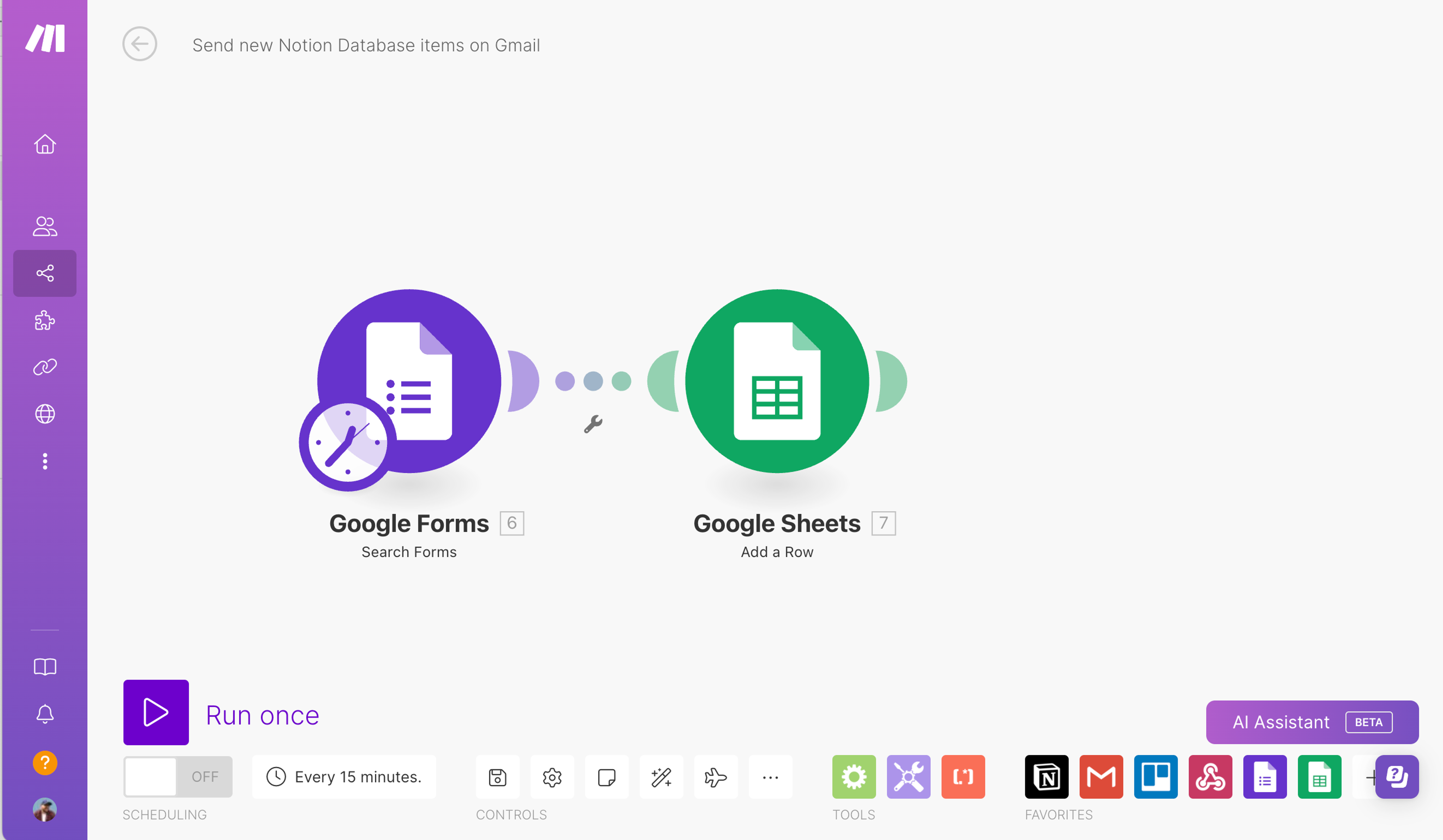
Zapier, conversely, focuses on simplicity and user-friendliness, ideal for beginners or those seeking straightforward solutions. Its interface and extensive 'Zaps' collection simplify automation setup, bypassing the need for detailed technical knowledge. Zapier aims to connect numerous apps effortlessly, catering to users prioritizing speed and ease.
And here's what the automation interface looks like in Zapier:
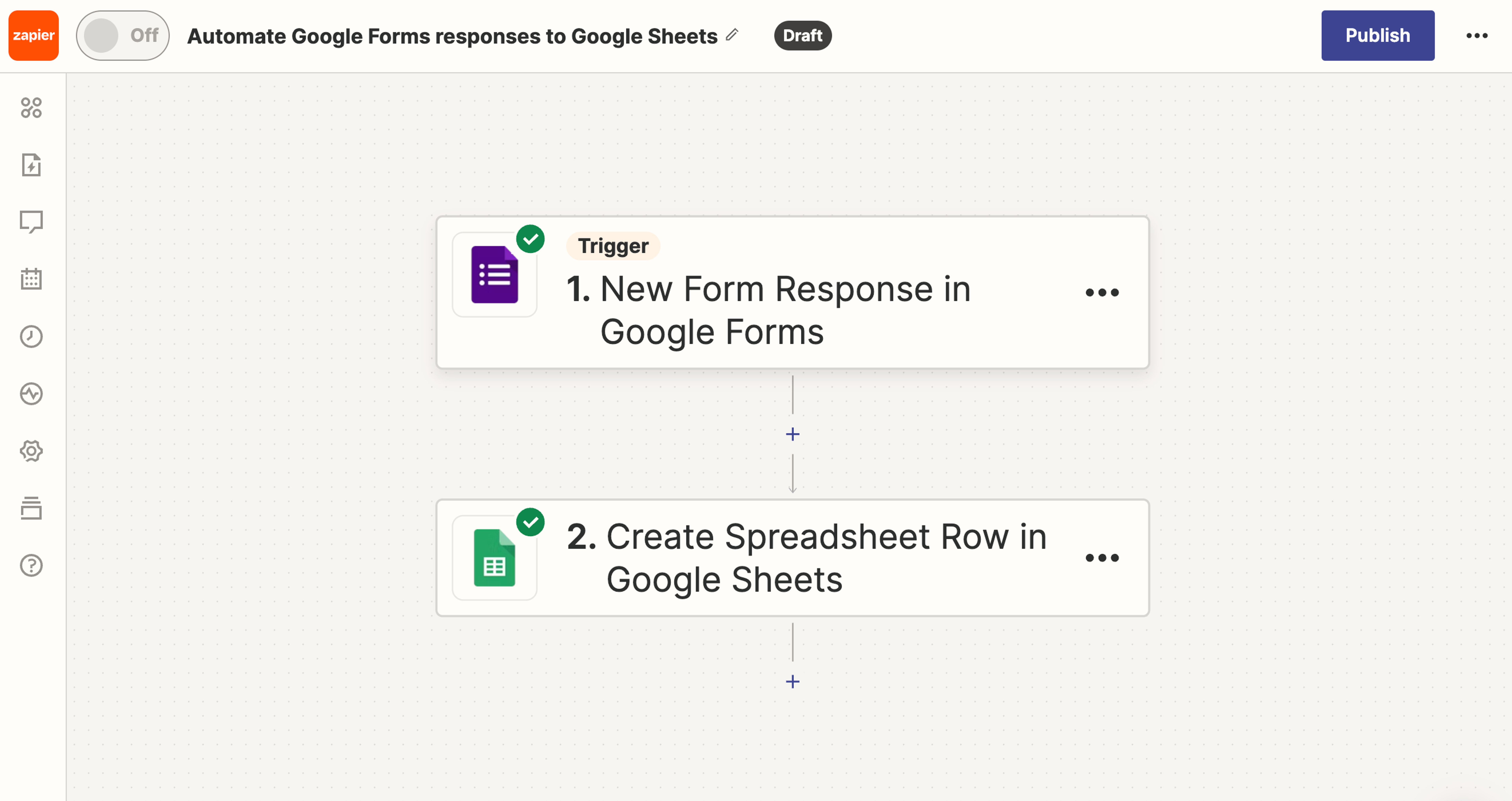
Make has more features (and often, better implementation)
Make offers a comprehensive suite of features that cater to a wide array of automation needs, right from the start. Here's a closer look at some of the key features, tools, and capabilities that Make brings to the table:
Multi-step workflows
Make supports complex, multi-step workflows that can handle intricate processes involving multiple actions and conditions. This capability allows users to design detailed automations that accurately reflect their operational needs, ensuring tasks are executed precisely as intended.
Instant webhook execution
Webhooks are a critical component in triggering automations based on events in other applications. Make's instant webhook execution means that as soon as an event occurs, the corresponding automation is triggered without delay, enhancing the responsiveness and timeliness of workflow execution.
Unlimited use of tools
Make does not restrict access to its powerful tools, such as filters, functions, routers (paths), and more, regardless of the plan you're on. This openness ensures users can fully utilize Make's capabilities to customize and refine their automations to meet their exact requirements.
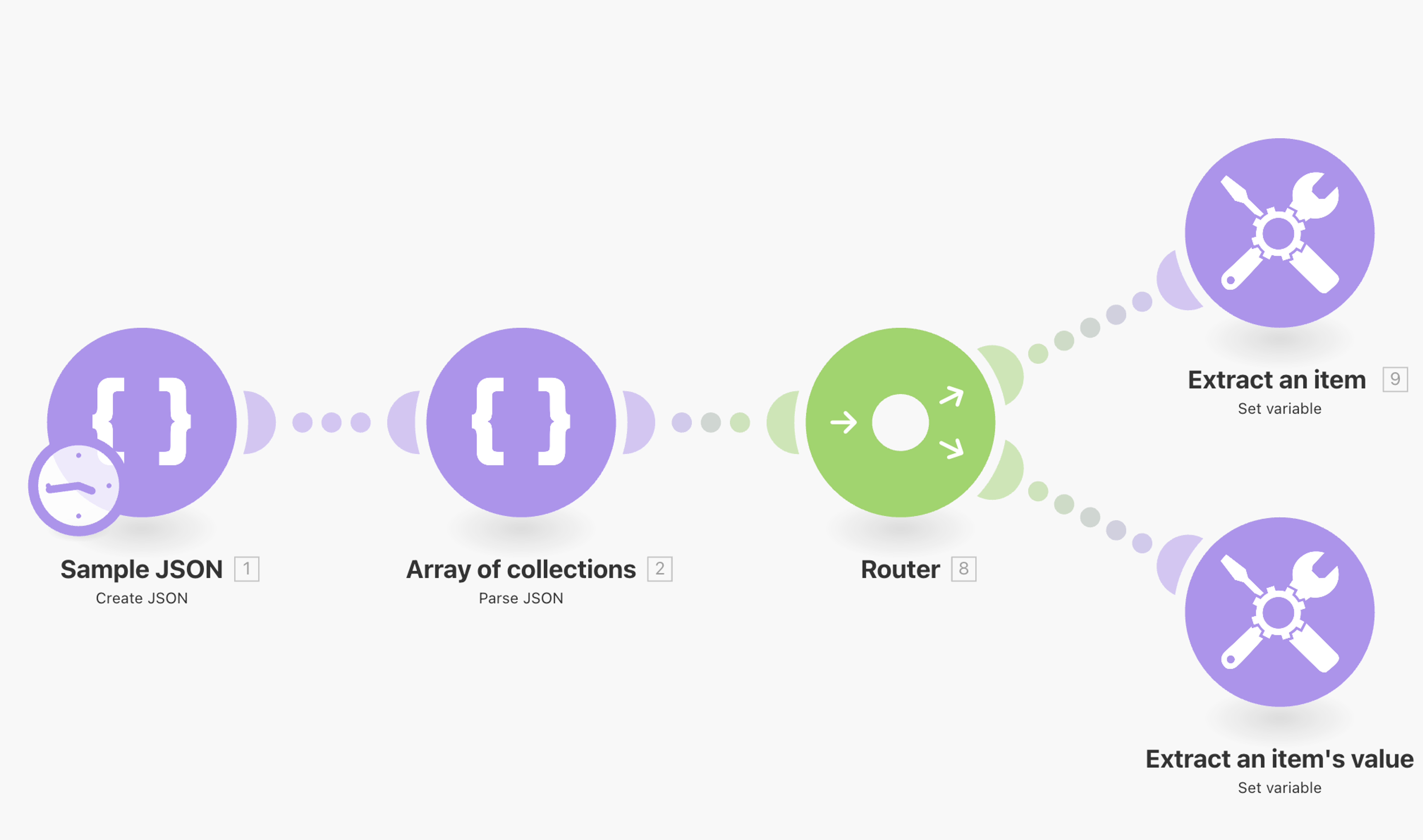
Complex data manipulation
Make excels in offering advanced data manipulation capabilities, including array manipulation, JSON/XML parsing, cycles, transactions, and more. These features empower users to work with data in sophisticated ways, enhancing the power and flexibility of automations.
But Zapier is much easier to learn
Zapier holds a significant advantage in terms of ease of use, especially for beginners or those looking for quick automation solutions. This accessibility is a key reason why many users gravitate towards Zapier when first diving into the world of automation.
User-friendly interface
Zapier's interface is designed with simplicity in mind, making it intuitive for users of all skill levels. Its clean and straightforward layout allows users to quickly understand how to create automations, known as Zaps, without a steep learning curve. This approachability is especially appealing to those new to automation or those who prefer a more guided experience.
Extensive library of pre-made Zaps

One of Zapier's most user-friendly features is its vast collection of pre-made Zaps. These templates provide users with ready-made automations that can be easily customized to fit their needs, significantly reducing the time and effort required to set up new workflows. This library not only accelerates the automation setup process but also serves as a learning tool, helping users understand how different apps can be connected and automated.
Simplified automation creation process
Creating Zaps in Zapier is simple: choosing a trigger app, selecting the specific trigger event, choosing an action app, and then specifying the action to be performed. This linear, step-by-step approach demystifies the automation creation process, making it accessible even to those with little to no technical background (and it's made even easier with the AI copilot, currently in beta).
While Make offers deeper customization and more powerful features for complex automations, Zapier's user-friendly approach makes it a favored choice for beginners and those prioritizing simplicity and speed in their automation endeavors.
Zapier has a larger integration library, but Make offers deeper action and trigger support
Zapier and Make both approach app integrations differently. Zapier is renowned for its expansive integration library, boasting connections with over 6,000 apps, making it one of the largest in the automation space. This vast array ensures users can find almost any app they need to integrate, from mainstream applications to niche tools, facilitating a broad range of automation possibilities.
But when it comes to the depth of action and trigger support within those integrations, Make takes the lead. Despite featuring a smaller library of 1,600+ apps, Make provides significantly more API endpoints per app than Zapier. This distinction means that Make users have access to a wider variety of actions and triggers when setting up their automations, allowing for more granular and specific control over their workflows.
API endpoints
API endpoints are the touchpoints through which automation platforms interact with third-party applications, dictating what actions can be automated within those apps. With Make offering twice as many API endpoints per app on average, users gain the flexibility to automate more specific and nuanced actions within their chosen applications.
To pick just one example: Zapier offers 26 potential actions with Trello and Make offers 52.
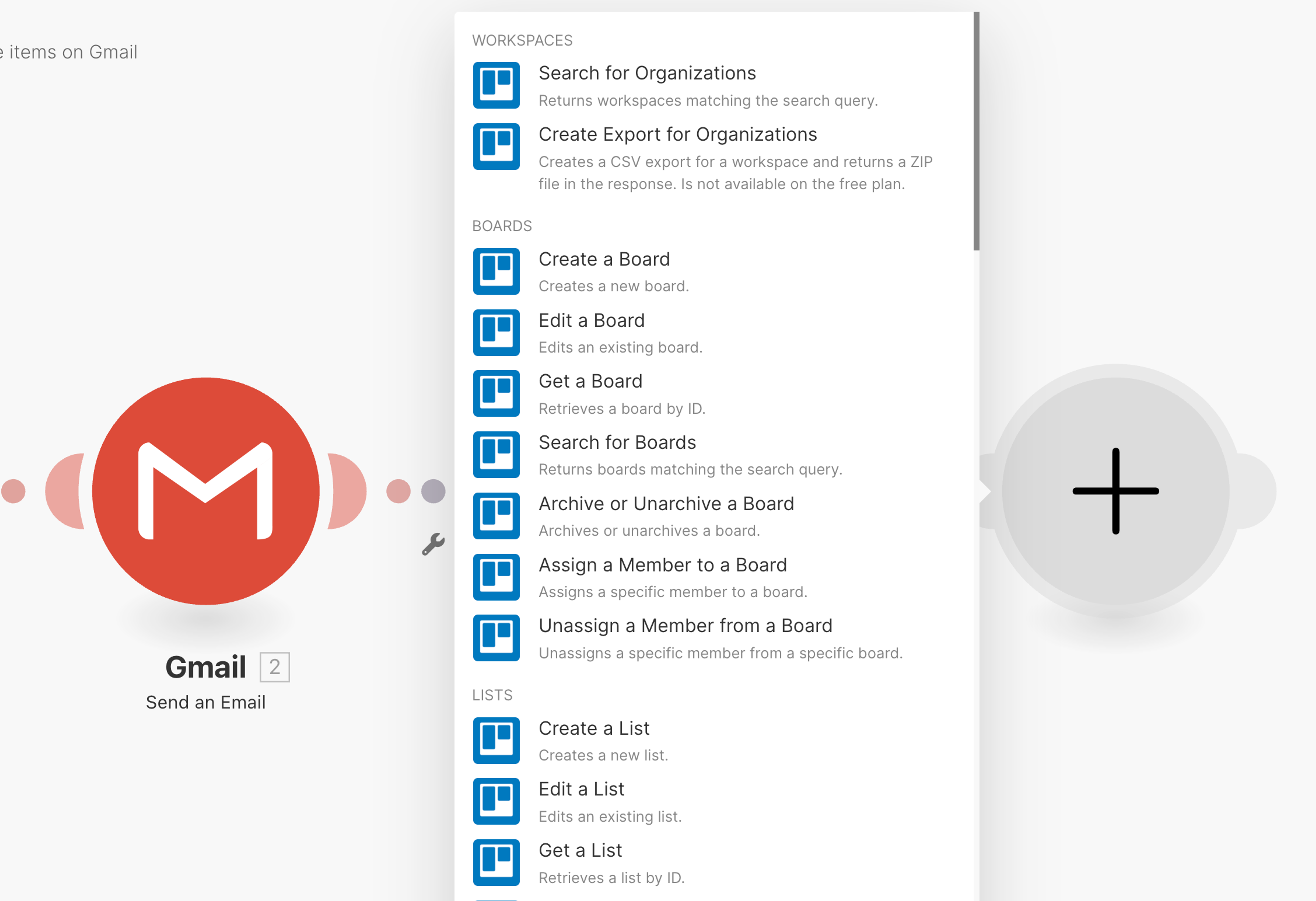
This level of support is crucial for users who need to go beyond basic task automation and require detailed control over how their apps communicate and interact.
HTTP module
Even if an app is not officially listed on Make's platform, users can connect to any service with an accessible API using the HTTP module. This feature significantly extends the scope of Make's integration capabilities, ensuring that users are not limited by the platform's native app library but can instead create custom connections to meet their unique needs.
The choice between Zapier and Make ultimately depends on what you give more value to: the breadth of app integrations with Zapier or the depth and customizability of integrations with Make. For us, depth wins.
Make is more cost-effective for most use cases
Make stands out for its cost-effective approach to automation, offering robust capabilities at a competitive price point. This makes it an attractive option for individuals and businesses alike, particularly for those who require complex, multi-step workflows without incurring high costs.
In contrast, Zapier's pricing model is structured around the volume of tasks, which can become costly for power users or businesses that depend on a high volume of automations. While Zapier offers a vast integration library and user-friendly interface, the cost can escalate quickly as the need for more tasks grows.
Make's pricing plans are designed to accommodate a wide range of automation needs, from basic to highly complex workflows, without a steep increase in price. This allows users to scale their automation efforts in line with their business growth without worrying about significant jumps in subscription costs.
Here’s a brief comparison of their offerings:
- Make: Offers a free plan that includes a significant monthly tasks allowance, and its paid plans are tiered to scale up with the user’s growth.
- Zapier: While it provides a wide range of integrations and a popular platform, its pricing can climb quickly as the number of tasks per month increases.
Make vs Zapier: Which is best for you?
So which one is right for you? Your unique needs will dictate which automation tool—Make or Zapier—will ace your approach to automation. But here's our overview:
Choose Zapier if:
- You're new to automation and value simplicity and ease of use.
- You need access to a vast library of integrations with a wide range of apps.
- Quick setup and straightforward automations are your priority.
Choose Make if:
- You require complex, multi-step workflows with advanced customization.
- Granular control over your automations and deep data manipulation are essential.
- You're looking for a cost-effective solution for intricate automation needs.
Why not consider Relay.app as an alternative?
Offering a unique blend of features, Relay.app aims to redefine the standards of workflow automation by emphasizing AI assistance, human oversight, and collaborative capabilities. Here's why Relay.app might be the right choice for your workflow automation needs:
Human-in-the-loop
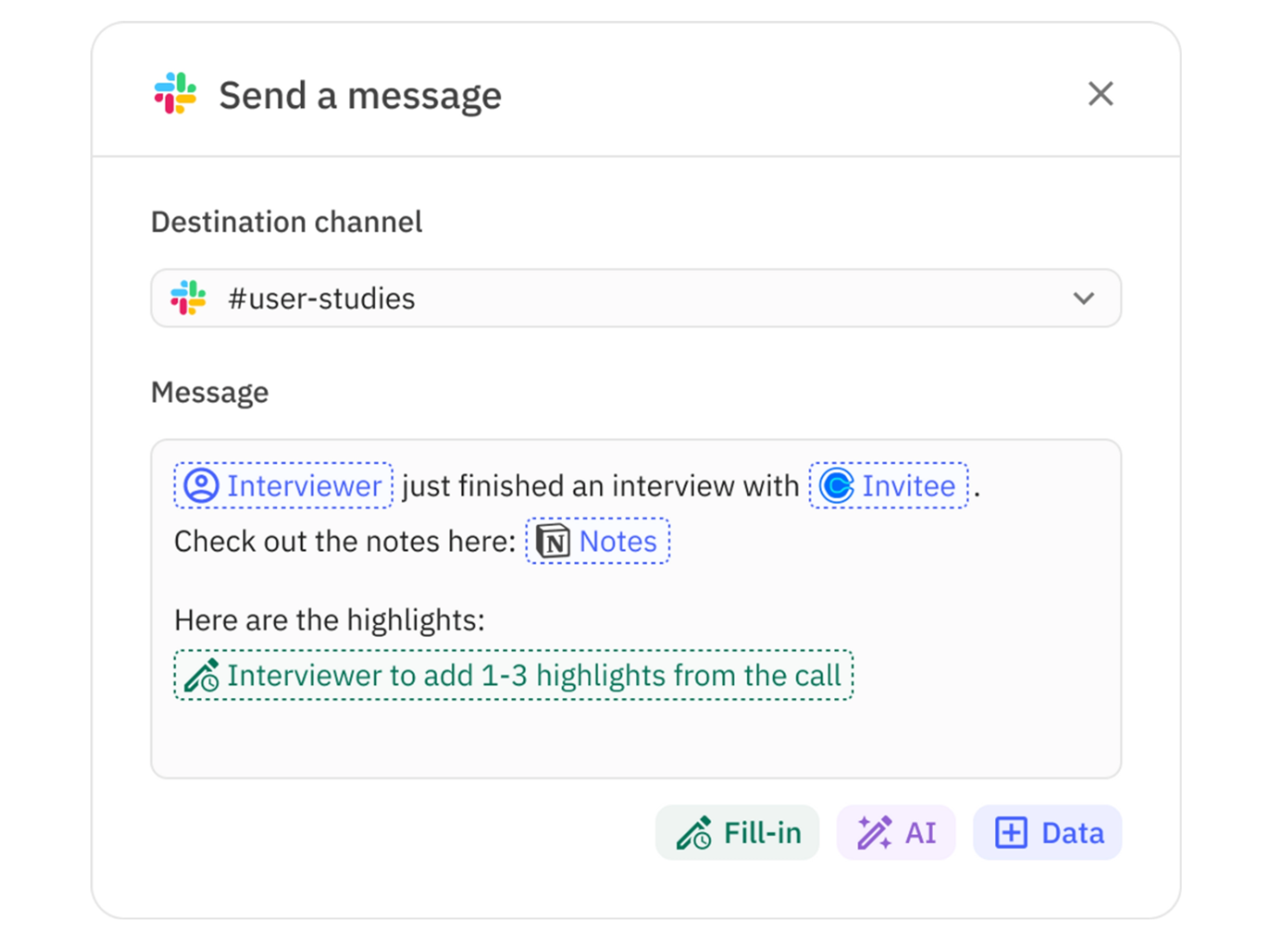
Sometimes automation just doesn't cut it—say, your boss needs to sign off on a document before you can ship it, or you want to check an email before it gets sent to a lead. Setting up human touchpoints in Zapier and Make is technically possible, but not built-in (or easy to set up). Relay.app uniquely integrates human judgment directly into workflows.
This capability allows for human approvals, decisions, and data input, providing a level of flexibility and control unparalleled in the automation space. It's a feature that caters to businesses looking for a balance between automation and human insight.
AI assistance
While Make and Zapier offer various automation tools, Relay.app simplifies the integration of AI into your workflows. You don't need to navigate the complexities of coding or crafting custom prompts. Our built-in AI tools are ready to automatically extract, summarize, or process data, making sophisticated AI assistance accessible and practical for a broad range of tasks.
Collaborative automation building

Both Make and Zapier support team collaboration to some extent, but Relay.app takes it further with its emphasis on collaborative automation building. It encourages teams to co-design and manage workflows, ensuring tasks can be dynamically assigned and adjusted, enhancing operational efficiency and teamwork.
Simple and predictable pricing
When it comes to pricing, Relay.app offers a stark contrast to the tiered and sometimes unpredictable models of Make and Zapier. With straightforward, transparent pricing, Relay.app ensures businesses of all sizes can anticipate their costs, allowing for better budget management and scaling without surprises.
Explore Zapier Pricing or Make Pricing.
The next generation of automation
Relay.app isn't just another tool in the box—it's a leap forward. By choosing Relay.app, you're opting for a platform that elevates your automation capabilities with AI, keeps human insight in the loop, and fosters a collaborative environment unmatched by Make or Zapier.
Ready to experience a more advanced, efficient, and human-centric approach to workflow automation? Try Relay for free today, and discover how it can transform your processes, enhance teamwork, and lead your automation strategy into the future.
Related reading:
